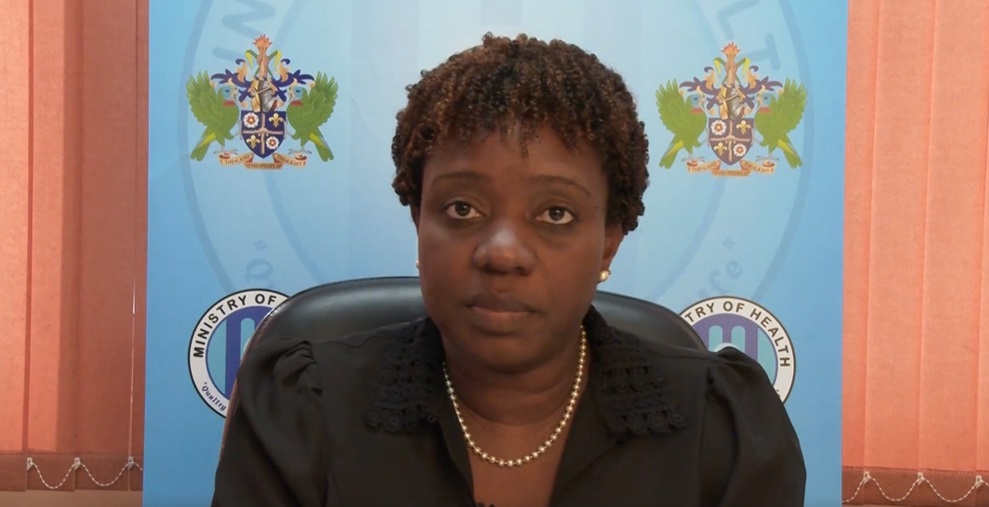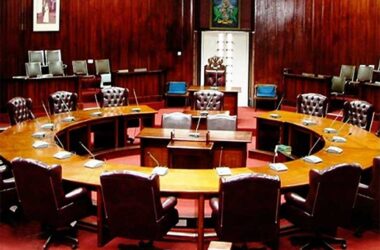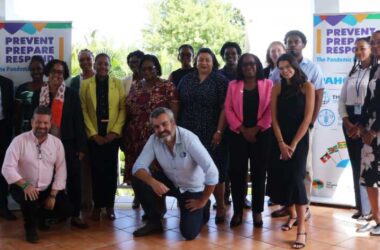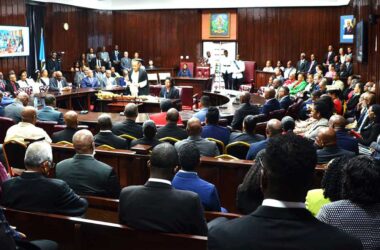After a recent update to their COVID-19 database, the Ministry of Health provided clarification on five deaths that were reported on Tuesday, June 22. According to the department, the deaths were part of a reclassification.
“These deaths all occurred between February and May of this year. The Ministry now restates each of these deaths, with the date on which it occurred. Death number 80 is a 60-year-old female from Dennery, who died on April 4. Death number 81 is a 54-year-old male from Castries, who died on February, 23. Death number 82 is a 76-year-old male from Gros Islet who died on April 5. Death number 83 is a 92-year-old female from Castries who died on March 9. Death number 84 is an 84-year-old female from Soufriere who died on May 29,” the Ministry stated.

National Epidemiologist, Dr. Michelle Francois, shed more light on the situation recently. She explained that that the reclassification was done primarily for reporting purposes and said the update was crucial.
“In Saint Lucia we had been reporting COVID-19 mortality and it included every single patient who tested positive for COVID-19 at the time of their death and tested by PCR. However, we have local, regional, as well as international reporting requirements. The exercise conducted to reclassify the deaths was really undertaken to ensure that when the need arises and when we do have international partners or regional partners who request that information, it is readily available,” she said.
As a result, the information must be accurate/”reliable”; name changes, for instance, can be a problem.
“Anybody who manages a database would understand that databases need to be examined. There may be duplicates and it is very easy to get duplicates in a database whereby persons may present using their driver’s license for example and present at the hospital using their national ID card. We know on death certificates sometimes you know somebody by one name and they present with a totally different name later on so all of these issues we had to address,” the Epidemiologist explained.
Through “active” surveillance, the department is able to rectify various issues. It is an important process that is done in order to update their database.
“In the unit what we do is both active and passive surveillance so through passive surveillance we receive reports of deaths in the community from physicians, however, there is also what we call active surveillance. We go out, so in addition to persons sending information, we also go to the reporting facilities: to the respiratory clinic, to the morgue, etc., to look for death certificates, to look through the books to try to identify any other individuals that we may have missed and should be added to our database,” she said.
Francois explained that this was done in order to have the most reliable data possible.
She added that “from that review we now have 60 COVID-19 deaths and 25 COVID-19 related deaths.” The Epidemiologist also explained the difference between a COVID-19 death and a COVID-19 related death, something that is often misunderstood.
“(For examples): in the case of an individual who happens to (die from a) homicide and at the time of death is diagnosed with COVID or tests positive for COVID-19, this individual would not be classified as a death due to COVID. (The) death would have been the result of the homicide. Also, there should be no period of recovery from COVID-19 between the illness and death, so if an individual tests positive for COVID-19 and two months down the line he or she passes away, that individual did not pass away due to COVID-19 because he (or she) made a full recovery,” she said.
“Similarly, there should be no attributed other illness such as cancer. So (if) an individual has terminal cancer, for example, and passes away and happens to test positive that individual would not be counted as a death due to COVID-19. In the case of an individual who tests positive for COVID-19 (and) develop(ed) a pneumonia and that pneumonia led to acute respiratory distress syndrome, that would be classified as a COVID-19 death,” Francois explained.
She also stated that death certificates were not modified. According to her, the Ministry of Health simply reviews death certificates.
“Nothing was changed at the Ministry of Health and Wellness; we do not sign death certificates. What we do is review the death certificates, so based on the chronology of events which the attendant physician had documented on the death certificates, we used this to determine whether it was a COVID death or a COVID related death. This was the exercise which we conducted in order to reclassify the COVID-19 deaths,” she said.











![Lisa Hunt - Chief Nutritionist [Photo credit : MOA]](https://thevoiceslu.com/wp-content/uploads/2025/12/Lisa-Hunt-Chief-Nutritionist-feat-380x250.jpg)

